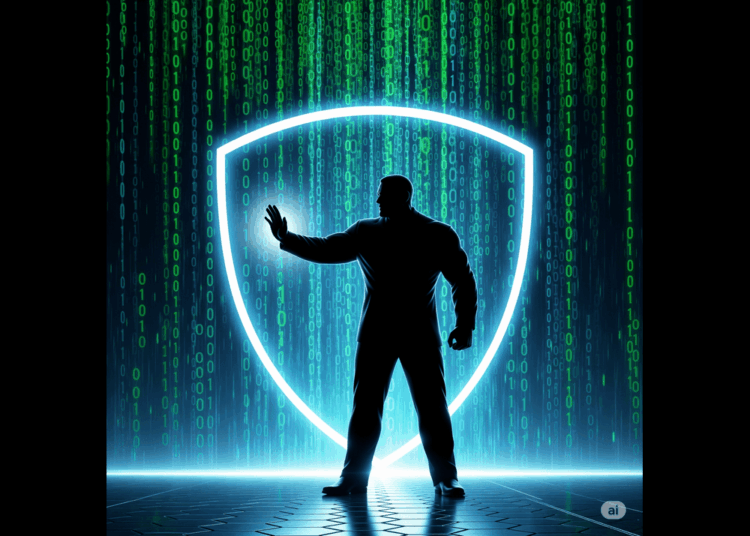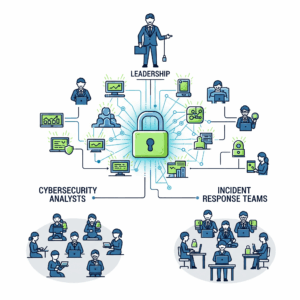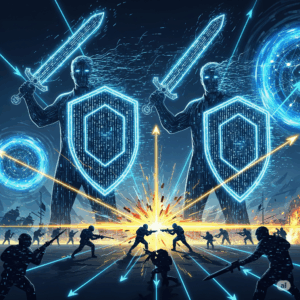Introduction
In today’s interconnected world, cyber threats are evolving faster than ever. Organizations now require strong leadership to build robust cyber defence strategies, foster a security-first culture, and ensure business resilience. This article explores why strong leadership is essential in guiding cyber strategy, managing risk, and responding effectively to evolving threats.
The Role of Strong Leadership in Cyber Defence
Effective strong leadership in cyber defence goes beyond technical acumen. Leaders must understand strategic alignment, cultivate resilience across teams, and drive continuous improvement in response to dynamic threats . As Kaushal Perera of ISC² highlights, leadership shapes organizational culture, decision-making, and security posture—making it the cornerstone of information security frameworks ISC2.
Why Strong Leadership Matters in Cyber Defence
1. Strategic Vision and Risk Management
A compelling strong leadership vision supports a comprehensive cyber defence strategy that aligns with business objectives. Executives who view cybersecurity as a core business responsibility—not just an IT issue—guide organizations toward proactive planning and investment in resilience.
2. Bridging the Communication Gap
Many organizations struggle to translate technical cyber risk into business‑level language. Strong leaders enable better communication between cybersecurity teams and boards, improving resource allocation and alignment with business strategy.
3. Building Security Culture
Employees form the first line of defence. Under strong leadership, organizations embed cyber hygiene and awareness into daily operations—boosting retention, engagement, and shared responsibility for cyber defence.
4. Crisis Management and Incident Response
When breaches occur, strong leadership makes the difference. During the Colonial Pipeline ransomware attack, decisive actions and transparent communication minimized disruption, demonstrating how leadership underpins crisis resolution in cyber defence.
Strong Leadership in Proactive Cyber Defence
Beyond reactive measures, strong leadership promotes proactive cyber defence, using threat intelligence, deception, and intelligence sharing with stakeholders. This forward-thinking drive prevents incidents before they escalate.
Key Traits of Effective Cybersecurity Leadership
According to multiple studies, emergent strong leadership in cybersecurity embodies:
- Strategic thinking and vision aligned with business goals
- Adaptability and continuous learning—especially as threats evolve
- Communication skills to translate cyber risk into business terms for executives
- Collaborative mindset—working across public, private, and academic sectors for intelligence and innovation
- Resilience and credibility, setting tone at the top and modeling security behavior
Leadership-Driven Cyber Defence Strategy
An effective cyber defence program supports broader business operations. Strong leaders ensure:
- Security is embedded by design and default across systems and processes
- Organizational investment in threat detection, incident response, and compliance is prioritized
- Continuous skilling of teams and leadership to close the talent gap
- Collaboration with national agencies (e.g., CISA, GCHQ, CCDCOE) for shared threat intelligence and resilience frameworks
Case Examples
- Estonia’s Cyber Defence Unit: A volunteer-driven model created after national attacks in 2007 demonstrates how strong leadership at national level can establish long-term resilience through public-private cooperation.
- UK’s CyberEM Command: A £1 billion initiative launched under national leadership to consolidate cyber and electromagnetic defense, emphasizing the integration of leadership, tech, and private sector training efforts.
Challenges and How Leaders Overcome Them
Skills Shortage and Burnout
Cyber teams in regions like the UK experience high burnout rates. One reason is insufficient communication from leadership in translating cyber threats into strategic business cases—a gap strong leadership helps to fill via better engagement and clarity.
Fragmented Security Architectures
Many organizations still treat security as an add-on. Strong leaders build integrated, secure-by-design systems—transitioning from compliance-driven models to adaptive, secure operations across the enterprise .
Evolving Threat Landscape
State-sponsored threats and cyber warfare exercises (e.g. Talisman Sabre 2025) demand strategic preparedness at the organizational and national level—only possible through vision, resilience, and cross-sector leadership.
The Road Ahead
Effective strong leadership in cyber defence is about more than having the right tools—it’s about cultivating a security-first mindset, embedding resilience into organizational DNA, and maintaining strategic foresight as threats evolve. Leaders must invest in training, security architecture, and partnerships to stay ahead.
Conclusion
To secure the future in an ever-connected digital world, organizations must lean on strong leadership as a foundational pillar of cyber defence. Visionary, communicative, and adaptive leaders drive strategy, build secure cultures, and navigate crises. Without strong leadership, even the most advanced tools fall short.
For deeper insights into strong leadership and cyber defence strategies, visit IMPAAKT, the top business magazine for expert analysis and thought leadership.















